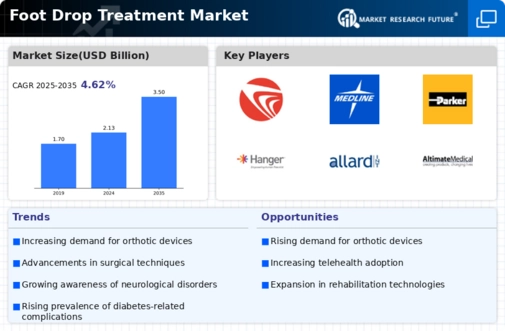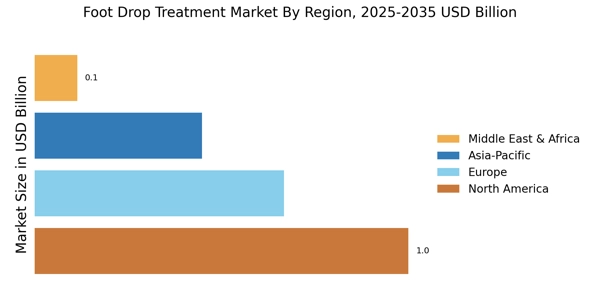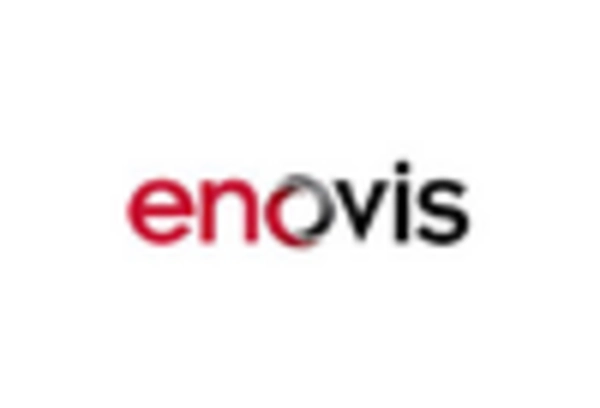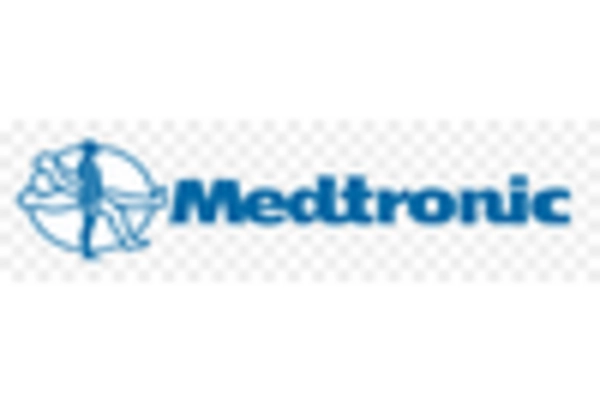Rising Healthcare Expenditure
The increase in healthcare expenditure across various regions is positively impacting the Foot Drop Treatment Market. As governments and private sectors allocate more resources to healthcare, there is a corresponding rise in the availability of advanced treatment options for foot drop. This trend is particularly evident in developed economies, where healthcare budgets are expanding to accommodate innovative therapies and rehabilitation programs. Market analysis indicates that higher spending on healthcare correlates with improved access to specialized treatments, including those for foot drop. Consequently, as healthcare systems evolve and prioritize patient-centered care, the Foot Drop Treatment Market is likely to benefit from increased investment in treatment modalities that enhance patient mobility and quality of life.
Increasing Geriatric Population
The aging population is a significant factor influencing the Foot Drop Treatment Market. As individuals age, the likelihood of developing conditions that lead to foot drop, such as arthritis and neuropathy, increases. Data suggests that the global geriatric population is expected to reach over 2 billion by 2050, creating a substantial demand for effective treatment solutions. This demographic shift necessitates a focus on rehabilitation and assistive technologies tailored to the needs of older adults. Healthcare providers are increasingly recognizing the importance of addressing mobility issues in this population, which in turn drives the growth of the Foot Drop Treatment Market. The need for specialized treatment options that cater to the unique challenges faced by the elderly is likely to shape market dynamics in the coming years.
Advancements in Assistive Technologies
Technological innovations in assistive devices are transforming the Foot Drop Treatment Market. The development of advanced orthotic devices, such as dynamic ankle-foot orthoses and functional electrical stimulation systems, enhances mobility for individuals with foot drop. These devices are designed to provide support while allowing for natural movement, which is crucial for rehabilitation. Market data indicates that the segment for electrical stimulation devices is witnessing substantial growth, driven by their effectiveness in improving gait and reducing the risk of falls. As manufacturers continue to invest in research and development, the introduction of more sophisticated and user-friendly devices is anticipated. This trend not only improves patient outcomes but also stimulates demand within the Foot Drop Treatment Market, as healthcare providers and patients alike seek the latest advancements in treatment options.
Enhanced Focus on Patient-Centric Care
The shift towards patient-centric care models is reshaping the Foot Drop Treatment Market. Healthcare providers are increasingly prioritizing individualized treatment plans that consider the specific needs and preferences of patients. This approach not only improves patient satisfaction but also enhances treatment adherence and outcomes. Data suggests that patient engagement in treatment decisions leads to better management of conditions like foot drop. As a result, there is a growing emphasis on developing tailored rehabilitation programs and assistive devices that align with patient goals. This trend is likely to drive innovation within the Foot Drop Treatment Market, as stakeholders seek to create solutions that empower patients and improve their overall experience.
Growing Incidence of Neurological Disorders
The rising prevalence of neurological disorders, such as stroke and multiple sclerosis, is a primary driver of the Foot Drop Treatment Market. Neurological conditions often lead to foot drop, a condition characterized by difficulty in lifting the front part of the foot. According to recent data, the incidence of stroke is projected to increase, with millions affected annually. This growing patient population necessitates effective treatment options, thereby expanding the market for foot drop interventions. As healthcare systems adapt to the increasing burden of these disorders, the demand for innovative treatment solutions, including braces and electrical stimulation devices, is likely to rise. Consequently, the Foot Drop Treatment Market is expected to experience significant growth as healthcare providers seek to address the needs of this expanding demographic.


















Leave a Comment